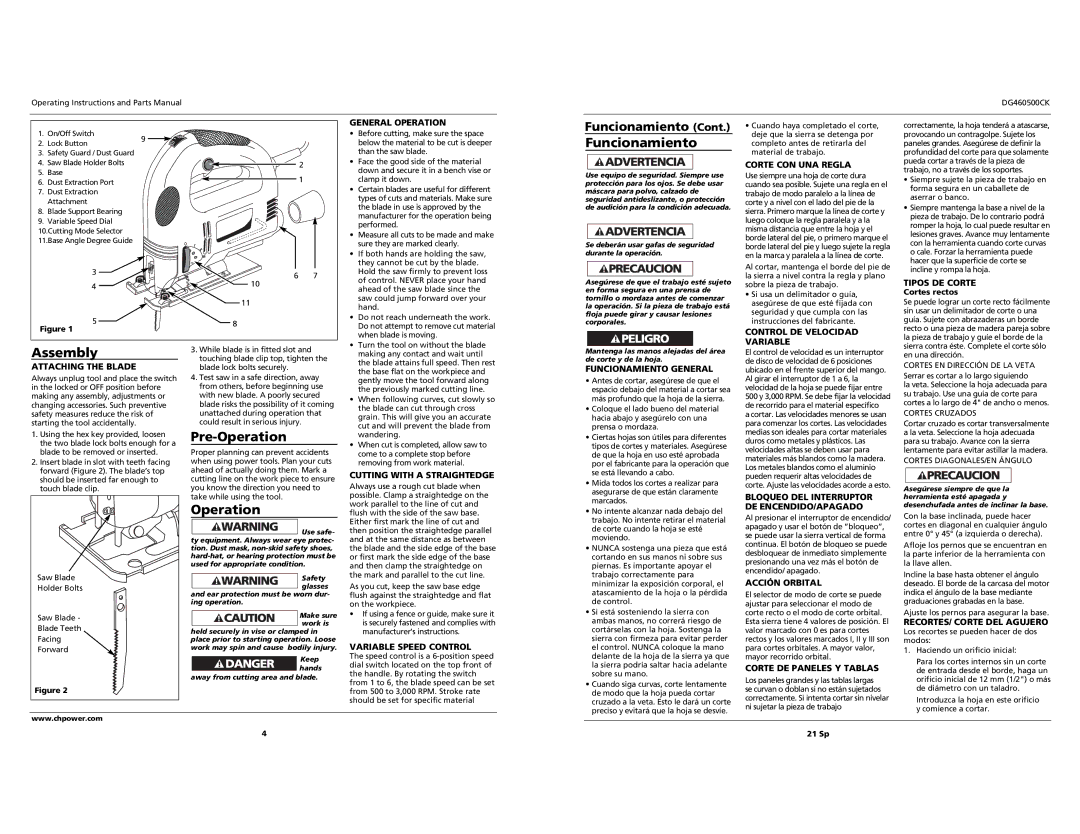DG460500CK specifications
The Campbell Hausfeld DG460500CK is a reliable and versatile air compressor designed to meet a variety of needs, from household tasks to professional applications. Known for its sturdiness and efficiency, this model stands out in the current market owing to its solid construction and user-friendly features.One of the key features of the DG460500CK is its powerful 4.5 CFM at 90 PSI output, which provides ample airflow for a variety of pneumatic tools, making it ideal for tasks such as inflating tires, powering nail guns, and running airbrushes. The compressor is powered by a robust 1.3 HP motor, which ensures durability and consistent performance even during extended use. Coupled with a 6-gallon steel tank, it offers a perfect balance of capacity and portability, allowing for both home and job site applications.
The DG460500CK incorporates advanced technologies that enhance its functionality. It features an oil-lubricated pump, which not only extends the life of the compressor but also helps maintain quieter operation compared to oil-free models. This makes it an excellent choice for environments where noise reduction is essential, such as residential settings or workshops. Additionally, the pump is designed for easy maintenance, enabling users to keep the compressor in optimal working condition with minimal effort.
Safety and convenience are prioritized in the design of the DG460500CK. The compressor is equipped with an integrated pressure regulator and gauge, allowing users to easily adjust and monitor the pressure levels to suit different applications. Furthermore, the unit features a quick-connect coupler, providing fast and easy tool changes, thus enhancing overall efficiency.
Moreover, the compact design of the Campbell Hausfeld DG460500CK, along with its carrying handle, makes it easily portable. Whether you’re moving it from your garage to your backyard or transporting it to a job site, the lightweight construction ensures that it can be maneuvered effortlessly.
In summary, the Campbell Hausfeld DG460500CK air compressor is a well-rounded product that combines power, convenience, and safety features for both DIY enthusiasts and professionals. With its robust build, advanced capabilities, and ease of use, it is a trusted companion for a wide range of air-powered tasks. Whether you're inflating, nailing, or sanding, this compressor is designed to get the job done efficiently and effectively.

